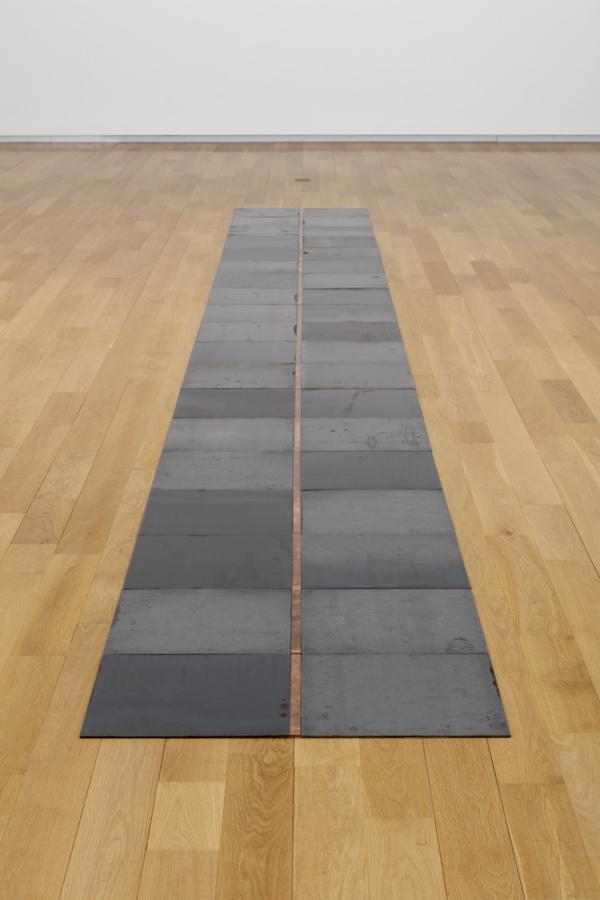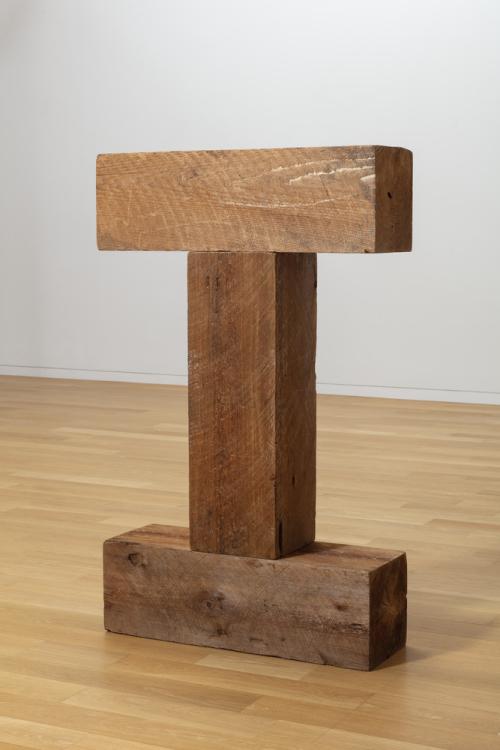Skip to main content
Slit
Artist
Carl Andre
(Born 1935, United States; died 2024, United States)
Date1981
MediumSteel and copper
DimensionsOverall: 3/16 × 40 1/2 × 374 in. (0.5 × 102.87 × 949.96 cm)
Steel Plate (each): 3/16 × 19 3/4 × 19 3/4 in. (0.5 × 50.17 × 50.17 cm)
Copper Strip (each): 3/16 × 19 3/4 × 1 1/16 in. (0.5 × 50.17 × 2.7 cm)
Steel Plate (each): 3/16 × 19 3/4 × 19 3/4 in. (0.5 × 50.17 × 50.17 cm)
Copper Strip (each): 3/16 × 19 3/4 × 1 1/16 in. (0.5 × 50.17 × 2.7 cm)
Credit LineCollection of the Modern Art Museum of Fort Worth, Gift of The Burnett Foundation in Honor of Michael Auping
Object number2002.1
Status
Not on viewInscribed[none]
Copyright© 2020 Carl Andre / Artists Rights Society (ARS), New York
Category
Label TextCarl Andre symmetrically arranges units of basic building materials—which are industrial, pre-fabricated, and abstract to begin with—into sculptural works. This approach made him a central figure in the development of the mid-twentieth-century art movement Minimalism. Best known for their horizontality, his arrangements of interchangeable square factory-produced metal plates have been described as the flattest sculptures in the history of art. Though low, they possess a powerful spatial presence, as if the space surrounding them were pressing down on the forms.
Slit, 1981, a later floor-based sculpture, is one of Andre’s more expressive configurations and one of the most revealing in regard to the artist’s vision of an expanded space for sculpture. Parallel strands of steel plates border a thin line of small copper units, all of which stretches more than thirty-one feet in length. Slit is decidedly linear and abstract, but also potentially referential. Between 1960 and 1964, Andre worked as a brakeman and conductor for the Pennsylvania Railroad, an experience that reinforced his interest in industrial materials and the perceptual qualities of vanishing points. The miles of tracks and lines of freight cars in flat, expansive landscapes increased his awareness of the relationship between an object and its surrounding space. Slit’s configuration vaguely suggests railroad tracks; however, evidence suggests that Andre saw it more broadly as a road, which also evokes multiple and interchangeable viewpoints.
Slit, 1981, a later floor-based sculpture, is one of Andre’s more expressive configurations and one of the most revealing in regard to the artist’s vision of an expanded space for sculpture. Parallel strands of steel plates border a thin line of small copper units, all of which stretches more than thirty-one feet in length. Slit is decidedly linear and abstract, but also potentially referential. Between 1960 and 1964, Andre worked as a brakeman and conductor for the Pennsylvania Railroad, an experience that reinforced his interest in industrial materials and the perceptual qualities of vanishing points. The miles of tracks and lines of freight cars in flat, expansive landscapes increased his awareness of the relationship between an object and its surrounding space. Slit’s configuration vaguely suggests railroad tracks; however, evidence suggests that Andre saw it more broadly as a road, which also evokes multiple and interchangeable viewpoints.





